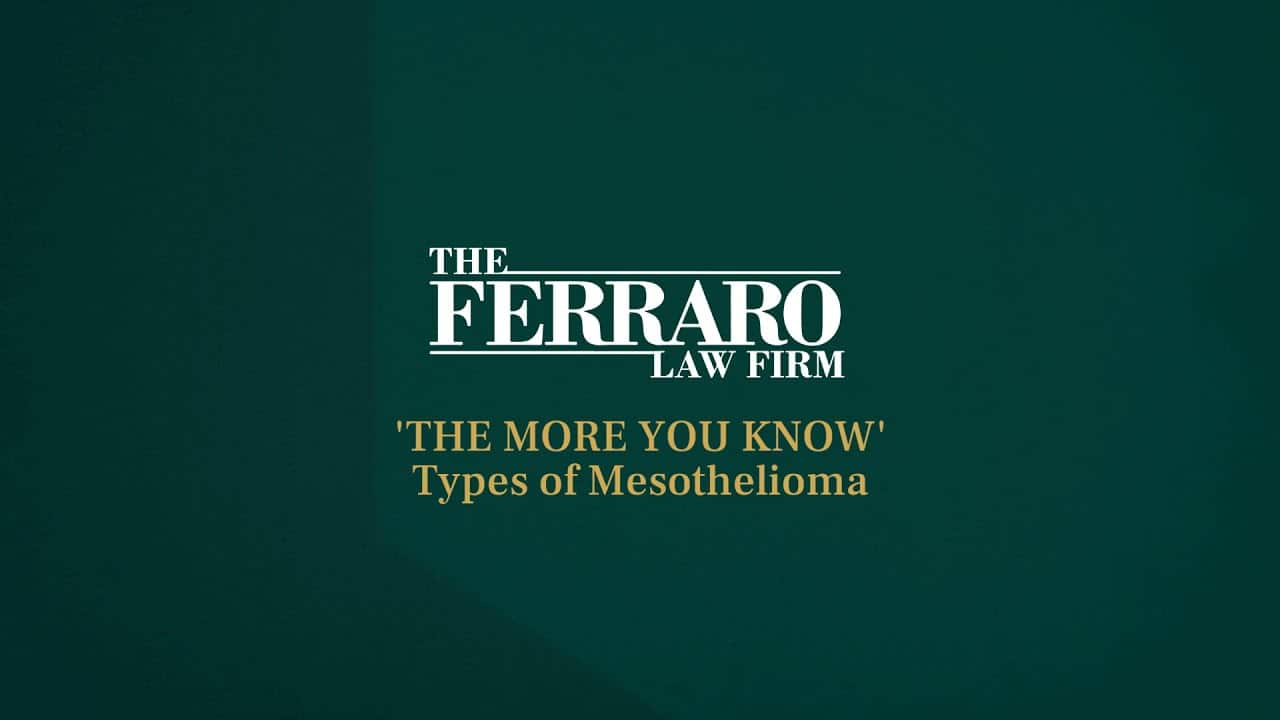If you were seriously injured, remember that it is crucial to choose the right law firm to represent your interests. We have been doing this for more than three decades, and have the resources you need to challenge any opponent.
What Laws Govern At-Fault Parties in Mesothelioma Cases Discussed in Feinberg v. Colgate-Palmolive Co.
The diagnosis of mesothelioma can be life altering. It is hard to identify who may be at fault for your exposure or how to proceed.
If you have been exposed to asbestos it is important to have a team of mesothelioma attorneys who concentrate on these cases.

Feinberg v. Colgate-Palmolive Co. is a case that arose from the Colgate-Palmolive’s (“defendant”) motion for dismissal of plaintiff’s personal injury action. Plaintiff was exposed to asbestos through the use of Cashmere Bouquet talcum powder made by the defendant. There was no label or warning on the product to indicate that there was asbestos in the powder. Because of her use of this product continuously for thirty years, plaintiff was diagnosed with mesothelioma.
Plaintiff argued that defendant failed to warn her that asbestos was in the talc and the effects of this asbestos exposure.
The conflict in this case arose in the confusion surrounding the Federal Food, Drug and Cosmetics Act (“FDCA”). This Act was created in the early 1900’s to address the prohibited actions surrounding misbranding of food, drugs and cosmetics. In 1997 there was a preemption provision (“Preemption Clause”) added to the act to address the labeling and packaging of cosmetics. See 21 U.S.C.A §379s(a).
This Preemption Clause specifically states that no state can establish any requirements for labeling or packaging of cosmetics that is different than those requirements expressed in the FDCA.
In Feinberg, the genesis of plaintiff’s injuries was forty-five years before the Preemption Clause was adopted. This genesis is considered to be the time the plaintiff was first exposed to asbestos. However, it is also important to note that it was not until after the adoption of the Preemption Clause that the plaintiff was diagnosed with mesothelioma.
In this case, Colgate argued that the Preemption Clause should apply to them because the plaintiff was diagnosed after the adoption of this clause. And if this clause is not considered applicable then Colgate argues that because the Preemption Clause was only adopted in 1997, the New York state law should apply to injuries that arose before the clause was adopted. New York state law provided a three year statute of limitations for claims that arose because of exposure to toxic substances including asbestos.
Preemption is a legal doctrine that gives precedence to federal law over state law. Consistent with this principle, states are also not allowed to adopt any law that is inconsistent with a federal law addressing the same issue.
Because of this dispute over the Preemption Clause, the court discusses its analysis of this clause. There are many factors that are taken into account when analyzing the different applications of new statutes or amendments. The court in Feinberg explains the process the court must observe in determining the interpretation of the Preemption Clause to the FDCA. It is important to observe the legislative intent, state law which conflicts with the federal law, as well as canons of statutory construction.
The court first discusses the issue of retroactivity. Usually in the legislation process, new laws or amendments are not considered applicable to things that occurred before the adoption of the law. The only exception to this concept is where it is specified to apply retroactively within the law or amendment.
The second area the court observes is that of express preemption. This arises where the legislature specifies in new legislation that the federal law is intended to preempt the state law. Statutory construction is very complicated. As individuals, we often overlook the intricacies involved in our statutes and the complications that they create.
Another thing touched on in this case is the area of administrative law. Congress is responsible for lawmaking, and in doing this they are also allowed to create administrative agencies that focus on different areas of law to help in this lawmaking. In this case, the legislature has created the Food and Drug Administration to manage legal issues surrounding these things.
It is the obligation of each agency to have a notice and comment rulemaking procedure. This rulemaking procedure is the only way the statute can be adopted and applied. This consists of first providing the appropriate notice to the public of a proposed legislation. Secondly, the agency must provide the public with sufficient time designated by statute to become appraised of the contents of the legislation. And then there is a time for comments to be made by anyone who has opinions or comments that are relevant to the proposed legislation.
Because there were still questions that a reasonable person could have regarding Colgate-Palmolive’s obligation under statute, their motion to dismiss was denied.
Table of Contents
Frequently Asked Questions: Mesothelioma & Asbestos
What is asbestos?
Why is asbestos dangerous?
What are asbestos-related diseases?
What causes mesothelioma?
What are the different types of mesothelioma?
What are common mesothelioma symptoms?
Do I qualify for compensation if I have mesothelioma?
What is the life expectancy for someone with mesothelioma?
Do I qualify for compensation if I have mesothelioma?
The Ferraro Law Firm provides comprehensive legal services, including mesothelioma legal help. Call (888) 554-2030 for a free and confidential consultation. Offices in Miami, Washington, D.C., and New York City.
Additional Resources:
Feinberg v. Colgate-Palmolive Co. (NY Mar. 22, 2012).






